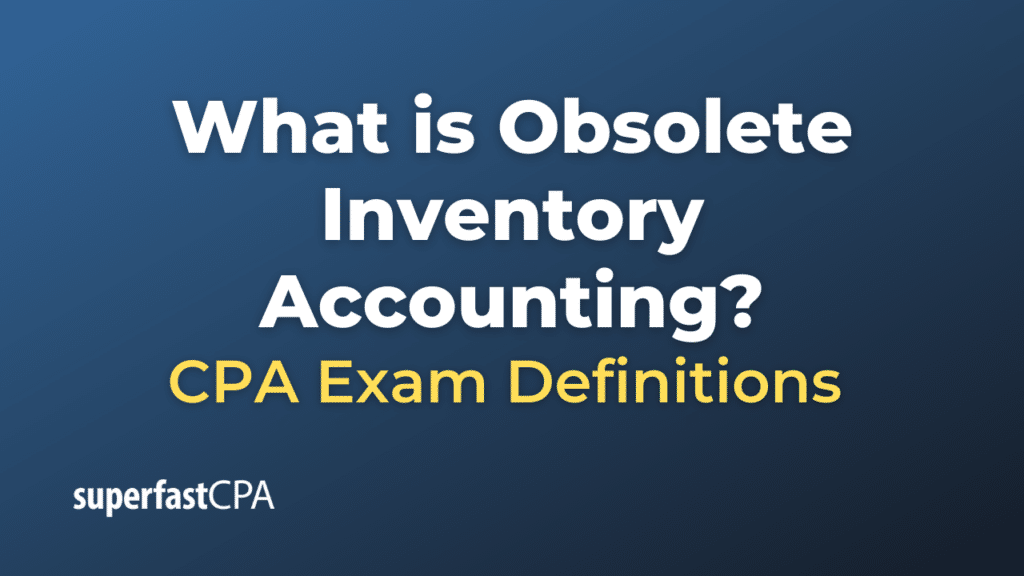Obsolete Inventory Accounting
Obsolete inventory accounting involves adjusting the value of inventory items in a company’s financial statements that have become obsolete. This adjustment reflects the reduced market value of these items, which are not expected to be sold at their original prices or possibly even sold at all.
The general process for obsolete inventory accounting usually involves the following steps:
- Identification: First, a company needs to identify which items in its inventory have become obsolete. This might be due to technological advancements (making the items outdated), changes in market trends or consumer preferences, or the introduction of newer models, among other reasons.
- Valuation: Once the obsolete items are identified, the company needs to determine their net realizable value, which is the estimated selling price in the ordinary course of business, less any costs necessary to make the sale. In some cases, this could be very low or even zero if the items are not expected to sell at all.
- Write-Down: The company then writes down the value of the obsolete inventory from its original cost to its net realizable value. This write-down is recognized as an expense in the income statement, reducing the company’s reported profit for the period. The adjusted value of the inventory is then reported on the balance sheet.
- Disposal: Finally, the company needs to dispose of the obsolete items. This could involve selling them at a discount, donating them, or throwing them away, depending on the specific circumstances. Any costs associated with the disposal (e.g., transport, storage, or dumping fees) are also recognized as expenses.
Accounting for obsolete inventory is an important part of maintaining accurate financial records. It ensures that the value of a company’s assets (its inventory) is not overstated, providing a more accurate picture of the company’s financial health. It also helps in managing inventory levels more effectively and planning for future inventory needs.
Example of Obsolete Inventory Accounting
Imagine you run a company, HighTech Electronics, that sells various electronic gadgets including smartphones.
In 2022, you bought 1,000 units of “Model X” smartphones for $200 each, spending a total of $200,000. These phones were selling well initially. However, by mid-2023, a new model “Model Y” was introduced in the market, and the demand for “Model X” fell drastically. You are left with 400 units of “Model X” in your inventory, which are now considered obsolete.
You find that the best you can do is sell these obsolete phones for $50 each in the secondary market, which is way less than their cost price. The net realizable value of the remaining phones is now 400 units * $50/unit = $20,000.
So, you would need to write down the value of the obsolete inventory from its original cost ($80,000) to its net realizable value ($20,000). The difference of $60,000 is recognized as an inventory write-down expense in your income statement, which reduces your reported profit for the year. On the balance sheet, the value of your inventory is also reduced accordingly.
After writing down the obsolete inventory, you then proceed to sell these items in the secondary market, donate them, or dispose of them in some other way.
This example shows how a company handles the accounting for obsolete inventory. It’s an important process because it ensures that the company’s financial records accurately reflect the value of its assets and its financial performance.













